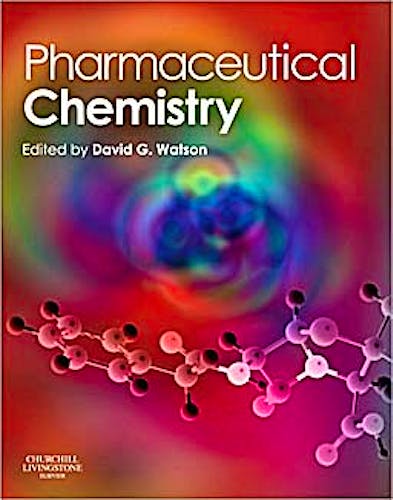

No hay productos en el carrito



Pharmaceutical Chemistry
Watson, D.
1ª Edición Febrero 2011
Inglés
Tapa blanda
652 pags
1500 gr
19 x 25 x null cm
ISBN 9780443072321
Editorial CHURCHILL LIVINGSTONE
LIBRO IMPRESO
-5%
57,76 €54,87 €IVA incluido
55,54 €52,76 €IVA no incluido
Recíbelo en un plazo de
7 - 10 días
LIBRO ELECTRÓNICO
-5%
46,79 €44,45 €IVA incluido
44,99 €42,74 €IVA no incluido
Acceso On Line
Inmediato
This new book, from the editor of the highly successful Pharmaceutical Analysis, sets out to define the area of pharmaceutical chemistry as distinct from medicinal chemistry. It focuses less on prototypes of drugs that perhaps never came to market and more on the drugs currently in use. The emphasis in the book is on the physicochemical properties of drug molecules and, in so far as they are known, the way that these properties govern the interaction of the drug with its target. Important physicochemical properties include pKa and partition coefficient and the properties of the structural elements within the drug which provide interactions with the target via a range of intermolecular forces. The last fifteen years has seen a great advance in the knowledge of protein structures and a strong emphasis is given to the interaction of drugs with proteins which shape the majority of drug mechanisms.
Features:
- Focus on intramolecular actions
- Mechanisms of action richly illustrated
- Self-assessment included
- Comprehensive chapters on vitamins and biotechnological products
Table of Contents:
1 Bond type and bond strength; 2 Hydrocarbons: alkanes, alkenes, aromatics and
alkylhalides; 3 Amines; 4 Neutral and acidic nitrogen compounds; 5 Oxygen- and
sulphur-containing functional groups; 6 Protein structure and its relevance
to drug action; 7 DNA structure and its importance to drug action; 8 Drug absorption,
distribution, metabolism and excretion; 9 Structure, activity and drug design;
10 Drugs affecting the adrenergic system; 11 Drugs exerting non-adrenergic effects
on cardiac output and vascular tone; 12 Drugs interacting with mammalian enzymes;
13 Central nervous system depressants; 14 Analgesics; 15 Local anaesthetics;
16 Anti-cholinergic agents; 17 Anti-histamine drugs ;18 CNS stimulants and CNS-active
drugs affecting the serotonergic system; 19 Drugs affecting haemostasis and
thrombosis; 20 Drugs affecting the endocrine system; 21 Anticancer drugs; 22
Antimicrobial chemotherapy: A. Antibiotics. B. Antituberculosis drugs; 23 Antiviral
drugs; 24 Antifungal chemotherapy; 25 Antiparasitic drugs; 26 Vitamins and minerals;
27 Biotechnologically produced products; 28 Drug and gene delivery systems;
29 Alcohol
By David G. Watson, BSc, PhD, PGCE, Senior Lecturer in Pharmaceutical Sciences, School of Pharmacy, University of Strathclyde, Glasgow, UK
© 2025 Axón Librería S.L.
2.149.0